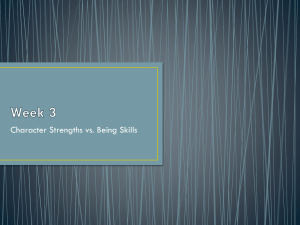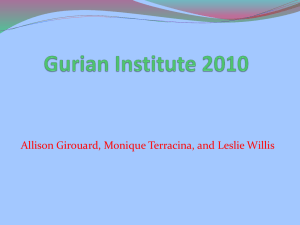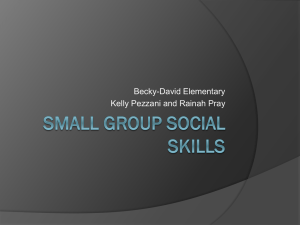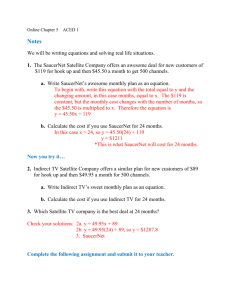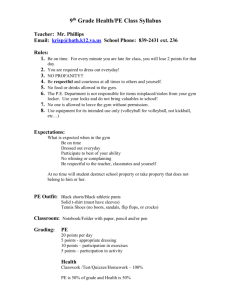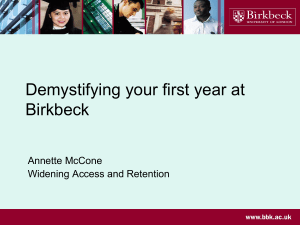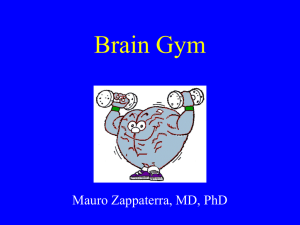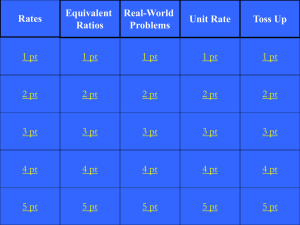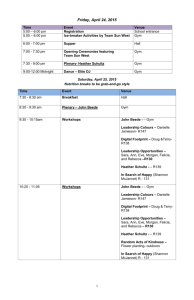Brain Gym - Dr. Tamerin Capellino
advertisement
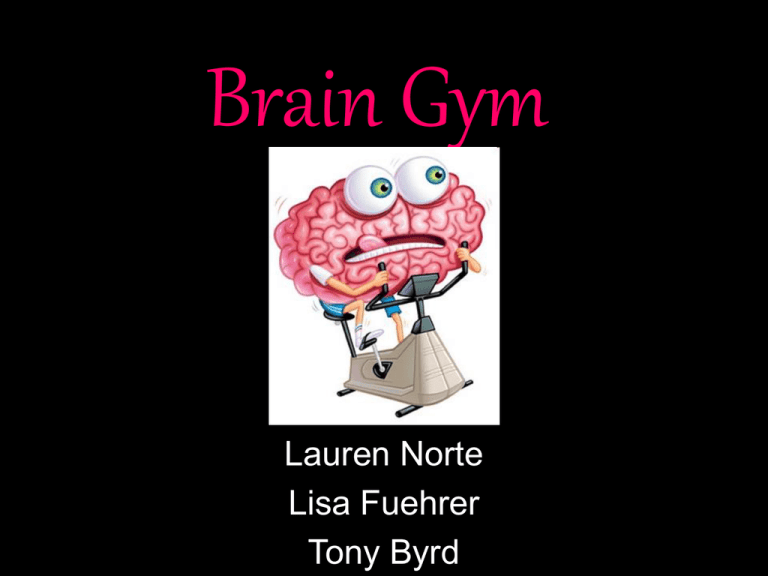
Brain Gym Lauren Norte Lisa Fuehrer Tony Byrd Polling Questions Nueroplasticity • The ability of the brain to create and re-route neurological paths. Brain Gym • Brain Gym: a program based on the concept that learning challenges can be overcome by carrying out certain movements, the use of which will create new neurological pathways in the brain. • The repetition of 26 brain gym activities is said to active the brain for optimal storage and retrieval of information. Brain Gym Introduction • Brain Gym is an educational kinesiology system developed by Dr. Paul Dennison and Gail E. Dennison. • It claims to speed the learning process through physical movement. • According the Dennison’s, physical movement balances the brain and creates new neural pathways, which facilitates faster learning. • Physical coordination, they say, leads to mental coordination. THEORETICAL FOUNDATIONS • The three main theoretical categories on which Brain Gym is based include: neurological repatterning, cerebral dominance, and perceptual–motor training. • Although there is overlap among these different theories, they are categorized by their most salient features to provide some degree of structure to the review. http://www.rhythmex.com/Hyatt%202007_BrainGym.pdf Brain Gym Video • http://www.youtube.com/watch?v=M5rH7k DcFpc EXAMPLES OF Exercises Brain Buttons • Located in the soft tissue under the clavicle, to the left or right of the sternum. • Pressing them activates the brain, sending messages from the right brain to the left and an increased flow of electromagnetic activity. • Used to help with reading. Energy Yawn • Increase circulation to the brain and activate for increase sensory perception. • This helps with reading aloud and creative writing. Hook Up’s • Connect the electrical circuits of the body and activates the brain for emotional centering. • This helps students take tests and work at a keyboard. Thinking cap • This activity helps the student to focus attention on hearing. It also lessens tension in skull bones. The student gently pulls ears backwards and unrolls them with fingers. They start from the top of the ear, massage them delicately and end on the lobe. It activates brain for: – hearing one's voice – short-term memory – inner dialogue and thinking Books on Using Movement • Smart Moves: Why Learning Is Not All in Your Head by Carla Hannaford. Salt Lake City: Great River Books, 2005. • The Dominance Factor: How Knowing Your Dominant Eye, Ear, Brain, Hand and Foot Can Improve Your Learning, by Carla Hannaford. Alexander, N.C.: Great Ocean Publishers, 1997. • “Three Papers on New Discoveries in Brain Function,” by Susan Diamond. [Dr. Diamond synopsized three of her recent papers: “Educational Kinesiology, Movement, and Sensory Integration: A Review of Recent, Relevant Neuroscientific Literature”; “NLP and the Brain: Some Issue Areas, Findings, and Hypotheses”; and “A Review of Brain Gym Literature and Study Design Proposal.”] Brain Gym® Journal, July 2001, Volume XV, Nos. 1 & 2. http://www.braingym.org/studies Health Standards • Mental, Emotional, and Social Health • 1.9.M Classify personal stressors at home, in school, and with peers. • Decision Making • 5.1.M Monitor personal stressors and assess techniques and managing them. Peer Reviewed Article • http://www.rhythmex.com/Hyatt%202007_ BrainGym.pdf Polling Questions Resources • http://www.wisegeek.com/what-is-braingym.htm • http://www.braingym.org/ • http://www.icadia.org/braingym2.htm
